Comforting massages
Since ancient times, the caress has been used as an instinctive and basic way to relieve aches. Over time, techniques have been perfected which are useful to alleviate tension and stress.
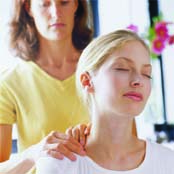
+ The word “massage”, which comes from the Greek root masso or massein, means to touch, handle, squeeze or knead.
The technique uses friction, pressure and vibrations over the body's surface to create a therapeutic effect. Massage therapy stimulates the muscle tissue, gets rid of toxins, relaxes the joints and increases the flow of oxygen and nutrients. The technique relaxes the entire body, relieving physical and emotional tensions. Massages also stimulate the production of endorphins, which soothe and calm the body and mind, leaving pleasurable after effects. Do-it-yourself massages use conventional massage techniques and others based on Oriental techniques such as shiatsu and reflexology (see pages 38 and 40), which produce similar physical and mental benefits. Many of the techniques illustrated can be practiced at any time or place, giving immediate results.
ESSENTIAL OILS
Massages are often given using essential oils with aromas naturally derived from plants and herbs. Essential oils also soften the skin and awaken the sense of smell, producing greater relaxation (see Essential oils from A to Z box, on page 43).
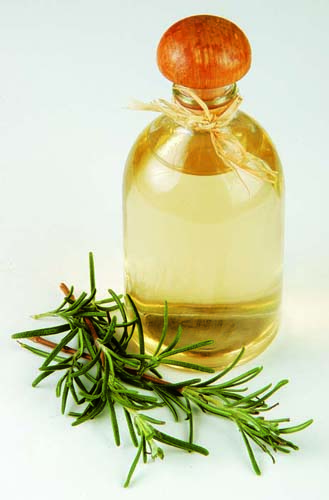
BASIC TECHNIQUES
These are movements mostly known in the West, and form the basics of muscle relaxing massages and self-massages.
∎ Relaxing stroke or effleurage. This technique creates warmth and relaxes the outer muscles. It is generally practiced at the beginning and end of a session. It's done by gently rubbing the muscle with the palms of the hands.
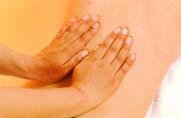
∎ Kneading. Taking part of the muscle and skin in your hands, moving back and forth, using your fingers and palm of your hands, as if you are kneading dough. This technique is ideal for alleviating tensions, especially in the shoulders, hips, buttocks and legs.

∎ Moving and pressing with the thumbs or petrissage. Pressing with your thumbs, move in circular motions using steady and firm pressure. This makes your muscle tissues –when tense, hard and stuck together– “lift up” and loosen up. This technique is ideal for getting rid of knots in the muscles, especially for the muscles near the spinal column and shoulders.

∎ Percussion technique or tapotement. This technique is ideal for stimulating and energizing the body. It's done by giving slight taps on fleshy muscles with the edges of your hands and palms.

Warning. Do not use this technique over bones (ribs and spinal column).
IMPORTANT
When giving a massage, keep the back straight and use the weight of your body for rhythm and to control your movements.
- • If you are working on a table, it's best to stand with your legs wide apart, slightly bending your knees, and bend when applying pressure.
- • If you are working on the floor, kneel down with your legs apart. You can also support yourself kneeling on one knee and with your other foot on the floor. It's recommended that you change your position often.
THE ANTI-STRESS MASSAGE
This is ideal for relieving daily tension. It's best to use these techniques as part of a complete routine to fight stress.
1. Begin in the middle of the back (working toward the lower back). Massage downward pressing with your thumbs moving back and forth to loosen the tension in the muscles running parallel to the spinal column.
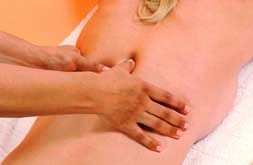
2. Continue with the effleurage technique to relax the muscles. Next, push with your fingertips and use a motion as if you are burying the fingertips of your other hand and vice versa. Repeat three times on each side.
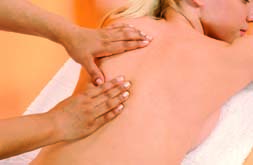
3. To loosen the back muscles, massage down where the rhomboid and trapezius muscles meet, so that they lift up and the shoulder blades loosen. As you work on this area, the movements will relieve the knots and tensions in the muscles.
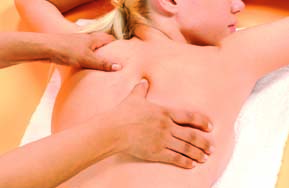
4. Using quick, circular movements, rub the back using both hands, starting from below and moving upward.
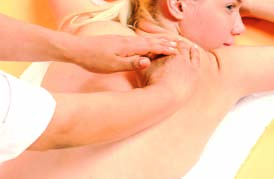
CREATE A RELAXING ATMOSPHERE
When giving massages or self-massages:
- • Choose a quiet, warm and softly lighted atmosphere.
- • You can put on relaxing music in the background.
- • The surface on which the person receiving the massage is sitting or lying should be solid, not soft.
- • When giving massages, use loose clothing so that you can move freely.
- • When you are receiving a massage, try to put your mind blank and allow your thoughts to disappear in order to fully relax.
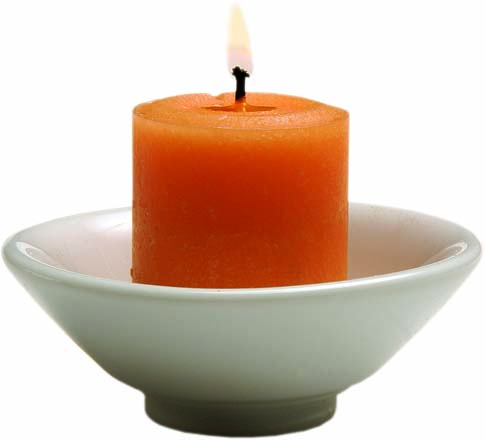
IF YOU ARE PREGNANT
Until the fourth month of pregnancy it is not recommended to give pregnant women massages. However, after the fourth month of pregnancy massages can be very beneficial and relaxing. Because lying on the stomach for a pregnant woman is not comfortable, she can lie on her side or back. Pregnant women can also sit backward on a chair when receiving back massages.
5. Work the knots and tense muscles along the sides of the spine, pressing with the fingertips.
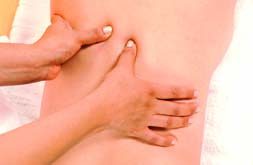
6. Pinch the skin, starting at the top and moving downward, using quick movements with both hands.
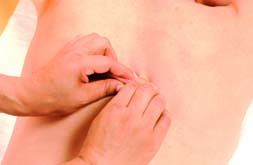
7. Hit the fleshy back muscles, using soft punches with the fists or edges of the hands.
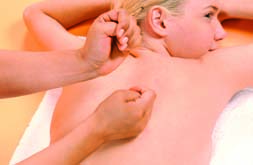
8. Place your cupped hands and massage along the rib cage and upper back. End by using the effleurage technique, as in step 1, massaging from the waist to the neck. Repeat three times using firm movements and three times using less pressure.

ADVICE FOR THE MASSEUSE
- • The body's temperature drops when receiving a massage, so when you are giving a massage, cover the parts of body you are not working on with towels. After a session, the person receiving the massage should rest. Cover her or him with a soft, light blanket.
- • A good masseuse should use his or her intuition. While using different techniques, you can improvise according to what the person receiving the massage may need.
- • To give a sense of comfort and relaxation, you should always keep one of your hands on the body of the person receiving the massage. This sends a sensation of continual movement. It's also important to use different levels of pressure and rhythm, to send waves of relaxation throughout the entire body.
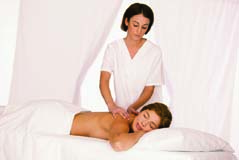
WARNING
- • It's best to avoid massages when suffering from skin inflammations, tumors, infections, heart trouble, flebitis, clogged arteries, or skin lesions.
RELAXING SELF-MASSAGES
The following do-it-yourself massages are a perfect way to relax when you need quick relief for tense muscles.
IMPORTANT
Before beginning these massages it's good to relax your arms, hands and wrists. It's important to relieve tension in these areas, to give you greater flexibility when applying necessary pressure in the following exercises.
1. Place your hands on your shoulders, with your fingers pointed toward your back, and apply pressure to the area. Bend your head down and then exhale. While you release the air, slowly bring the head backward. Repeat three times.

2. Press the base of your skull with your thumbs. Next, release the pressure and with your fingers massage the scalp with circular motions.
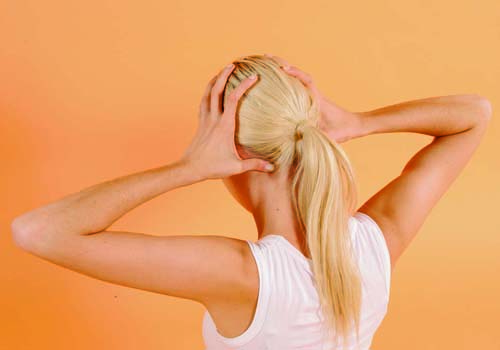
3. Place your hands on the sides of the head. Inhale and bring the head downward. You should feel the muscles in the neck stretch.
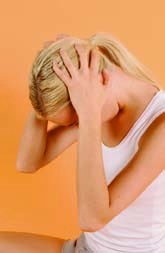
4. Place your right hand over your left shoulder. Slightly press on the point where the neck ends; release and press again. Repeat this movement several times on each side.
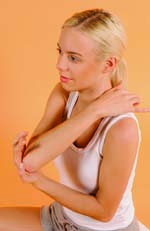
5. Place your fingers at the base of the neck. Apply circular pressure, from the base of the neck up to the skull. Next, continue the same motion downward.
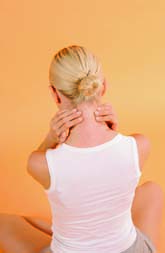
6. Place your left hand over your right shoulder. Press with all of your fingertips, except for the thumb, and make tiny circular movements. Continue on the other side.
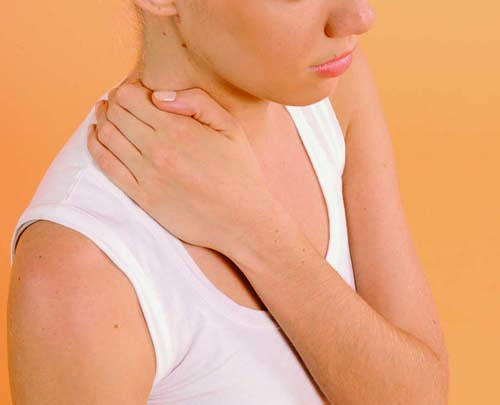
HOW LONG
- • With self-massages, you should work on each part of the body between three and five minutes.
- • Once you've finished giving yourself a massage, it's good to relax your hands and arms, which tend to tense up while doing the exercises.
FAST RELAXATION
To help you feel better instantly, you can give yourself the following self-massages anywhere, anytime.
∎ In the chest
To eliminate tension and worries.
1. Place your hands under your arms, (keeping them on their corresponding side of the body) with the thumbs in your armpit and your fingers extended on your chest. Continue by massaging your chest muscles with your fingertips, using firm pressure.
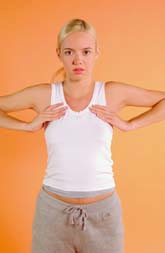
2. Close your hands bit by bit, until you end by gently massaging the chest with your knuckles.
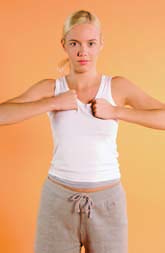
3. Place your right hand under your left arm, and with the fingertips under the armpits and your thumb placed outside, gently massage the area. Repeat on the other side.
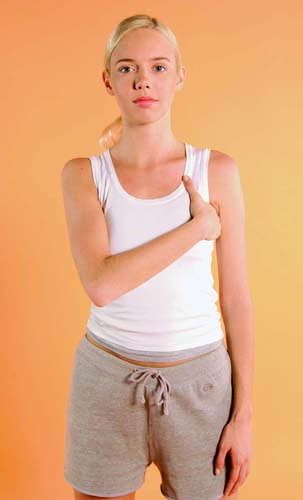
∎ In the abdomen
To relieve tension and anxiety stored in the abdomen.
1. Sit on a chair with your back straight. Place your hands on the abdomen, with your palms extended and fingers forward, spread apart. Massage by marking small clock-wise circles. Next, close your hands and put your fingers under your ribcage, pressing gently upward until your fingers fill the area.
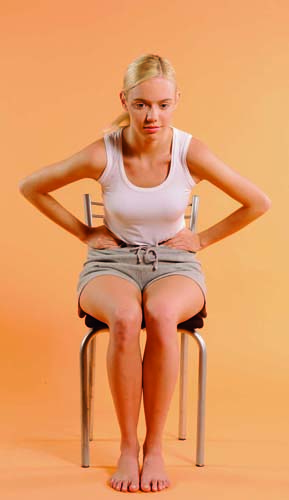
2. Place your hands on each side of your hips, with the thumbs pointing forward and placed only an inch or two away from your bellybutton. Press, using clock wise circular movements.
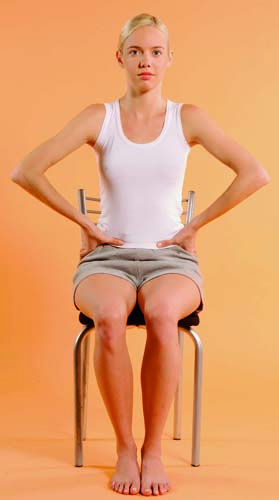
3. Hold your hands together over the stomach. Start by rubbing with gentle motions, moving from the top downward, until you feel heat. Finally, keep your hands on your stomach for a few minutes, breathing slowly.
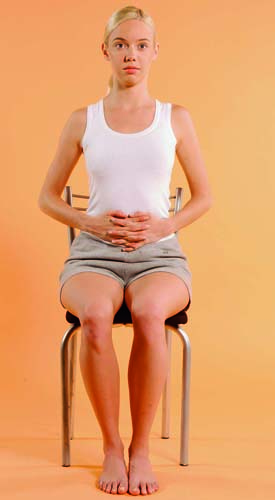
SPECIAL SELF-MASSAGES
These massages are great when you are nervous and need to quickly calm down. In less than an hour you will be relaxed.
∎ Facial massage
With your fingertips gently press around your eyebrows, moving from the center of your forehead to your temples and around your ears, until you reach below your earlobes where your neck begins.
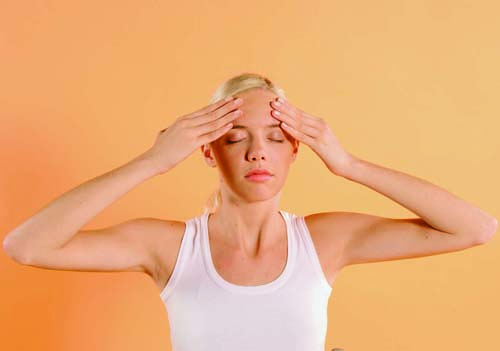
∎ Back massage
Sit on a chair and place your hands on your back, with your thumb pointed toward your waist and fingers backward. Move up and down, pressing the muscles around the spine with your fingertips. Next, with your hands closed, hit your lower back with your fists. Rub your buttocks using quick movements.
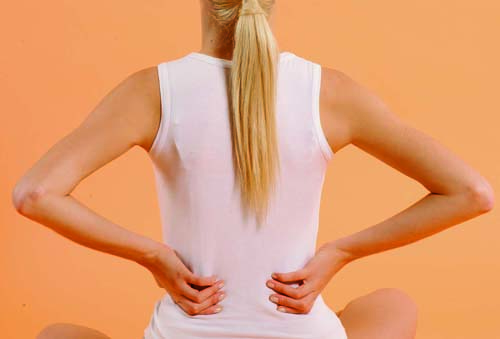
PRIVATE TIME
If you have an important meeting or interview which will make you nervous, try and give yourself some private time for these relaxing exercises before leaving home. The best thing you can do is take a hot bath (with relaxing oils; see Essential oils from A to Z box, on page 43) and then continue with these self-massages before getting dressed. Focussing on your breathing is also very important.
BEFORE A JOB INTERVIEW
Without having to change your clothes and in any room where you are alone and calm, you can do these exercises to put yourself in harmony.
- • Standing on your feet, with your legs apart and your hands on your hips at the level of your kidneys, lower your head to your knees and then lift it up. Repeat this exercise several times.
- • Massage each one of your fingers and toes for a few minutes, taking deep breaths to release anxiety.
- • Sit up straight, take a deep breath and keep the air inside your lungs, without exhaling for ten seconds. Then gently release the air. Repeat 10 times.
- • Standing up, with your arms relaxed against your sides, your back straight and your feet together, take a deep breath and lift up one of your arms straight. Repeat 10 times with each arm.
∎ Hand massage
Massage the palm of your hand with your thumb in circular movements.
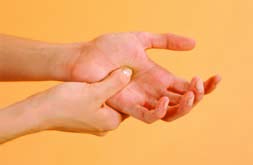
∎ Leg and foot massage
Pinch the calves, moving from your ankle all the way up to your knees, to stimulate blood flow and energy. Rotate your ankles, one foot a time. Finally, massage the center of each foot with your thumbs.
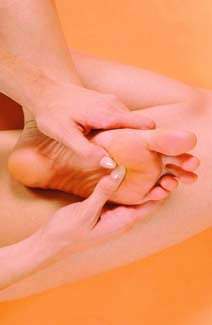

Comment about this article, ask questions, or add new information about this topic: